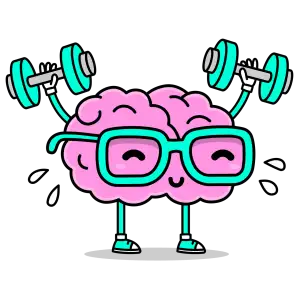Rack Up Strength with Racked Squats

Racked Squats Explained
Racked squats, also known as pin squats or Anderson squats, are a variation of the squat where the barbell is set on a rack at a predetermined height. This setup eliminates the need to lift the weight off the floor, allowing you to focus on the ascending portion of the movement. Racked squats are particularly beneficial for targeting specific areas of the squat, like the lockout or breaking through plateaus. By adjusting the rack height, you can emphasize different muscle groups and ranges of motion. For instance, setting the rack just below your sticking point can help you build strength and power in that specific area.
Muscles Worked
This exercise primarily targets the muscles in your legs and glutes. You'll feel a significant burn in your quads (front of your thighs) and hamstrings (back of your thighs) as you power through each repetition. Your glutes (buttocks) are heavily engaged to extend your hips, while your calves provide stability and help you push off the ground. Additionally, your core muscles, including your abs and lower back, work to maintain balance and control throughout the movement.
Racked squats - the cage may confine the bar, but it's your will that's truly tested.
Eamon Davenport
Racked Squat Variations
The racked squat is a highly versatile exercise that can be customized to target specific muscle groups and fitness levels. Front squats emphasize the quads and core, while zercher squats engage the upper back and core to a greater extent. For an added stability challenge, try single-leg variations like the Bulgarian split squat or pistol squat. To increase the range of motion and enhance hip mobility, opt for overhead squats. Remember to prioritize proper form and start with lighter weights to prevent injuries. As you progress, gradually increase the weight or resistance to continue challenging your muscles.
Racked Squat Benefits
The racked squat, a variation of the traditional squat performed with the barbell supported on a rack, offers unique benefits for lifters of all levels. This variation allows for a more controlled and isolated movement, targeting specific muscle groups more effectively.
Common Mistakes
One of the biggest mistakes is not reading the instructions carefully. Always double-check what's needed before you start. Another common error is rushing through the task. Take your time to understand the question and plan your response. Many people make assumptions instead of relying on the provided information. Stick to the given facts and avoid making guesses. Ignoring grammar and spelling can also lower your score. Proofread your work carefully to catch any errors. Finally, don't be afraid to ask for clarification if you're unsure about something. It's better to ask than to proceed with incorrect information.
Safety Tips and Precautions
Always prioritize safety when engaging in any activity. Before starting, familiarize yourself with the environment and potential hazards. Use appropriate safety gear and equipment for the specific task. Follow instructions and guidelines carefully. Stay alert and aware of your surroundings. Take breaks when needed to avoid fatigue. If working with others, maintain clear communication and coordination. In case of an emergency, have a plan and know the proper procedures. Remember, your safety is paramount, so exercise caution and common sense at all times.
Programming Racked Squats
Racked squats, like back squats, are highly effective for building lower body strength and muscle mass. However, they offer unique benefits and require specific programming considerations.
First, determine the appropriate rack height. This depends on your goals and mobility. Higher rack positions (above parallel) target quads and are great for beginners. Lower positions (below parallel) engage more glutes and hamstrings but demand greater mobility.
Once you've chosen your rack height, program racked squats like any other compound lift. Start with 2-3 sets of 8-12 reps, gradually increasing weight or reps over time. Focus on proper form and control throughout the movement.
Consider incorporating variations like tempo squats (slow eccentrics), pause squats (holding at the bottom), or pin squats (pausing on the safety pins). These variations can help address weaknesses and enhance muscle growth.
Remember, proper warm-up and recovery are crucial for any squat variation. Always prioritize safety and listen to your body.
Who Should Do Racked Squats
Racked squats are a great exercise for building lower body strength and muscle mass, but they're not for everyone. If you're new to lifting weights, you should start with bodyweight squats or goblet squats before moving on to racked squats. Once you've mastered those exercises, you can start adding weight to your squats gradually.
If you have any injuries, especially to your back, hips, or knees, you should talk to your doctor or physical therapist before doing racked squats. You may need to modify the exercise or avoid it altogether.
Racked squats can be a safe and effective exercise when performed correctly. However, it's important to start slowly and gradually increase the weight you're lifting. If you experience any pain, stop and consult with a qualified professional.
Published: 15. 06. 2024
Category: Food



